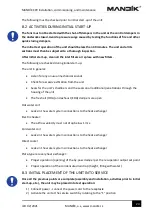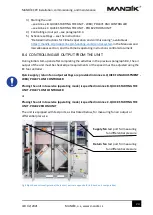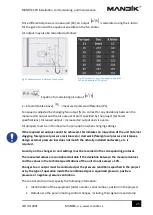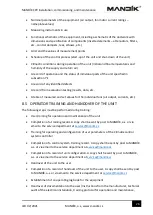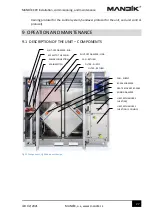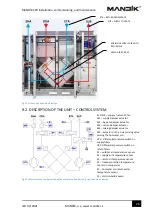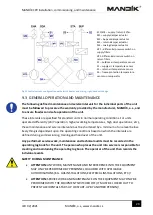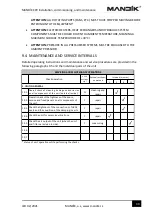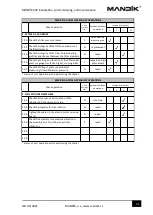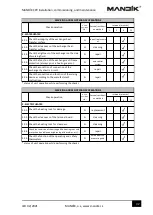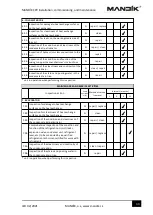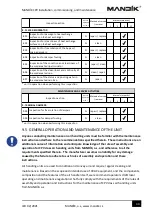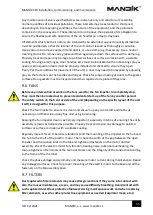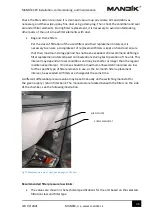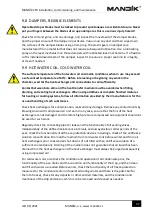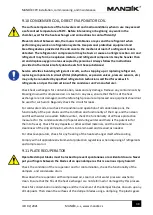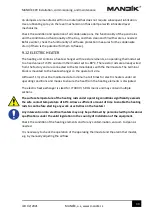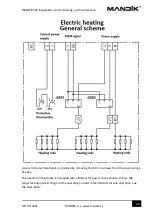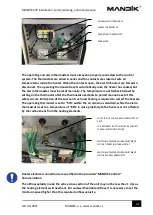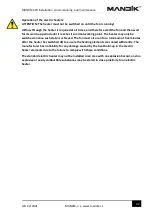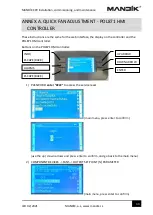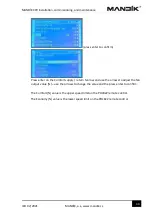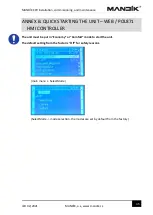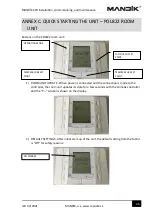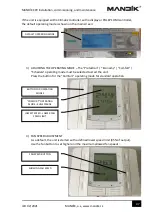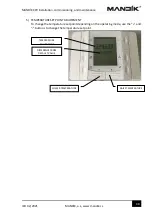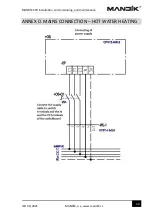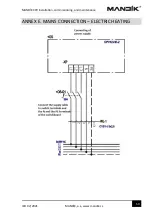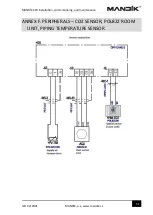
MANDÍK CPV Installation, commissioning, and maintenance
IZU 02/2021
MANDÍK, a.s., www.mandik.cz
R
37
9.8
DAMPERS, FLEXIBLE ELEMENTS
Operable damper blades must be locked to prevent spontaneous or accidental closure. Never
put your fingers between the blades of an open damper as this is a serious injury hazard!
Check for dirt and grime, and any damage, and inspect the movement of the damper blades,
and the proper closure of the damper in particular. Vacuum up any dust and then wipe down
the surfaces of the damper blades using a damp rag. The plastic gears on dampers are
manufactured from a material that does not require subsequent lubrication. Use a lubricating
spray on the lever mechanism on those dampers with lubricated lever mechanisms. If a flexible
cuff is installed downstream of the damper, inspect it to ensure a proper seal and its integrity,
or clean if needed.
9.9
HOT WATER COIL, COLD WATER COIL
The surface temperature of the hot water coil and media conditions when in use may exceed
a safe contact temperature of 60°C. Before intervening or beginning any work in the
chamber, wait for the heat exchanger and connections to cool sufficiently.
Contact between bare skin and the heat transfer medium must be avoided when filling,
draining, and venting heat exchangers. When using additives or complete finished mixtures
for heating or cooling systems, follow all information provided by their manufacturers for the
use and handling of such substances.
Check heat exchangers for contamination, leaks and any damage. Remove any contaminants by
blowing down with compressed air or steam. In any case, ensure that the fins of the heat
exchanger are not damaged. and therefore high-pressure compressed air equipment should not
be used for such work.
Regularly check the connecting pipe for leaks and the functionality of all venting valves.
Independently of the defined maintenance intervals, and always before colder periods of the
year, check the functionality of all freeze protection devices, including a check of the antifreeze
solution concentration. Drain all the medium from cold water coils before winter and from all
heat exchangers prior to extended shut-downs (if not filled with an antifreeze solution of a
sufficient concentration). Draining of the medium does not guarantee that all liquid has been
drained from the heat exchanger and the heat exchanger must always be purged subsequently
using compressed air!
For cold water coils, also check the condition and operation of all condensate pans, the
functionality of the pan drains and the condition and functionality of the trap, and then clean
and fill with water as needed. Before winter, check the functionality of all freeze protection
measures for the condensate drain (if operated during winter and there is the potential for
them to freeze). Check for any deposits or other settled materials, and the condition and
cleanliness of the drip eliminator, which is to be removed and cleaned as needed.

